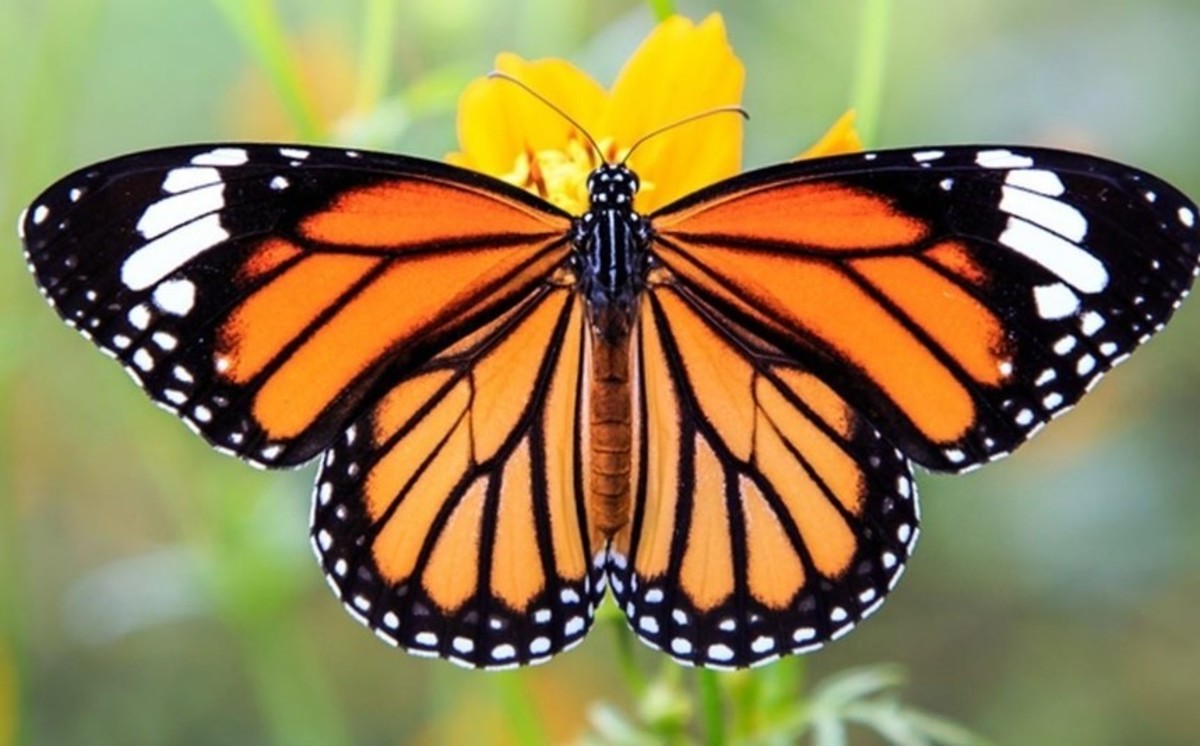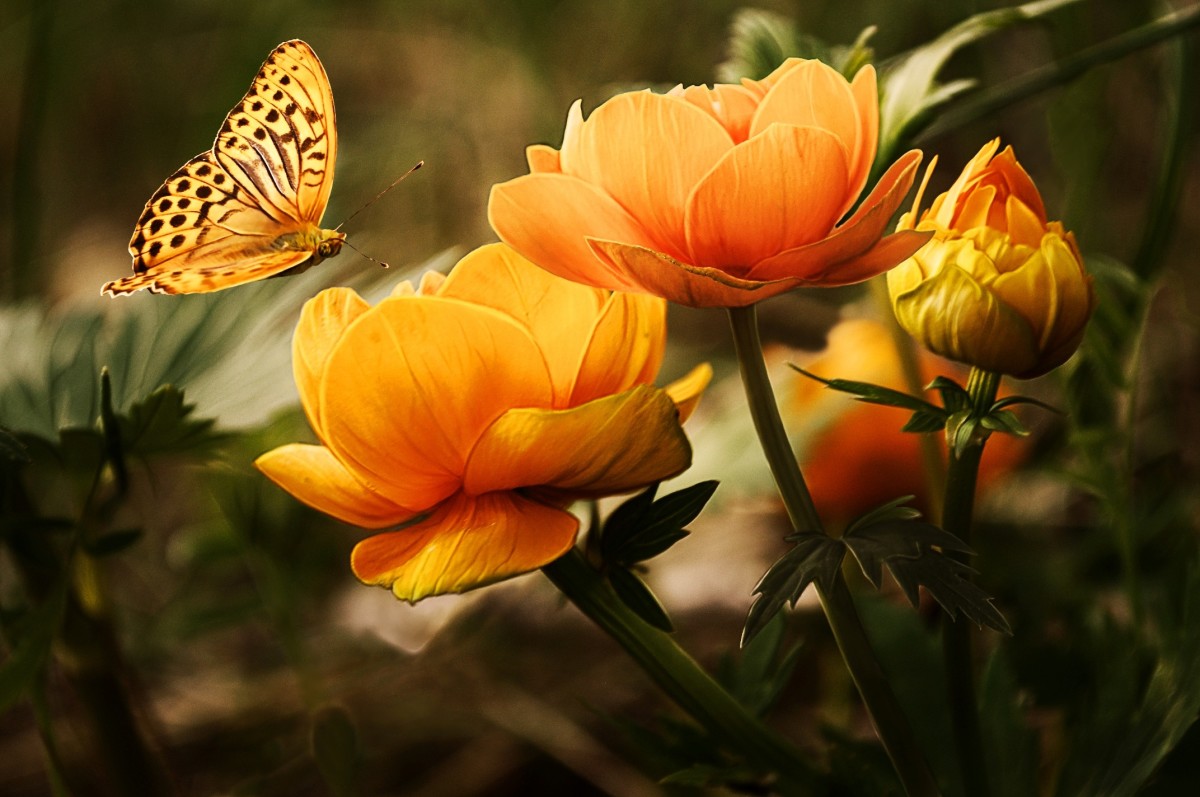Butterfly Pictures
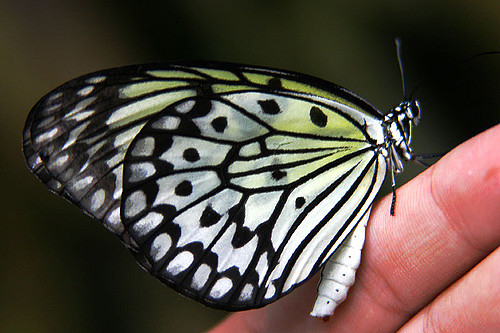
Butterfly Pictures
Whether you are student learning more about these fascinating insects, a nature lover, or someone who just appreciates the beauty of these creatures, the butterfly pictures and facts on this page may be just what you need.
Below are images from various photographers to enjoy. Any of these images can be purchased by clicking on them. I've provided some facts about these insects and provided some links to additional information as well.
Butterflies Set to Music - Click to Listen as You Browse
Butterflies exist around the globe, in fact, according to Thomas Marent in his book Butterfly, there are estimated to be about 165,000 different species of them; many of which are moths. The largest numbers of them live in warmer climates.
This image shows a Glasswing butterfly. It's ingenious when you think about it. It will be camouflaged regardless of where it lands without having to change colors.
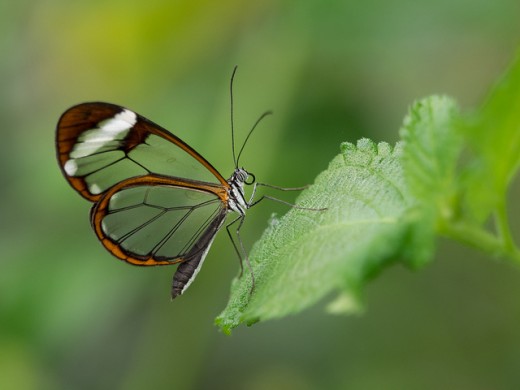
Butterflies have a 4 stage life cycle. They start life out as an egg, then evolve into a larva/caterpillar, a pupa or chrysalis, and then an adult butterfly with the large wings that we are accustomed to seeing.
Butterfly eggs are generally attached to plant leaves and the larva will usually consume plant matter, although some also consume insects.
Below is a Red Spotted Purple butterfly feasting.
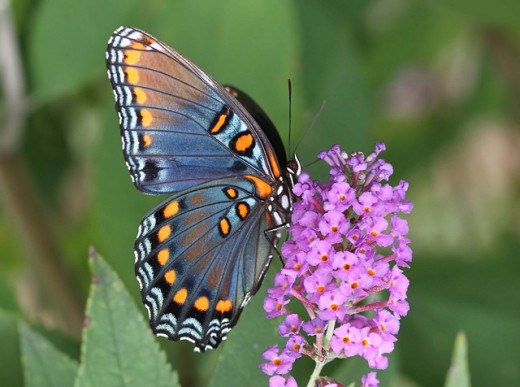
The majority of adult butterflies generally drink nectar from flowers which is why they are so attracted to flower gardens and fields filled with wildflowers. They can be attracted to the flowers by their sense of smell. There are some species however that feed on decaying fruit, tree sap, and other organic matter.
The image below appears to be that of a Painted Lady.
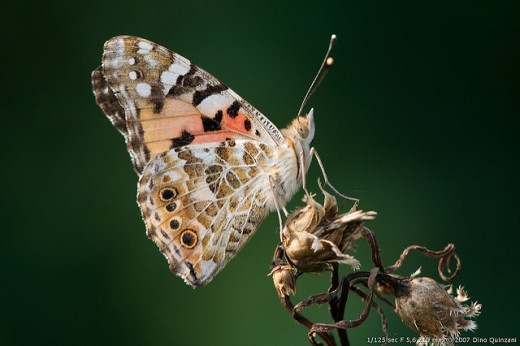
Butterflies often live only a few weeks. However, some can live for 8 or 9 months although much of that time is inactive. Some can survive winter in the pupa or the caterpillar stage, then later emerge in the spring as a butterfly. There are of course some butterflies that migrate, Monarchs for instance, which are known to travel up to 3,000 miles.
This Goliath Birdwing Butterfly below is one of the largest species.
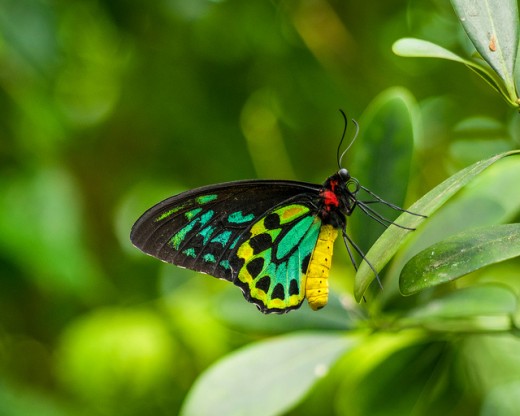
Spiders, birds, and wasps are just a few of many predators that threaten butterflies. You can learn more about how butterflies defend themselves from predators in this Wikipedia article.
A Monarch butterfly is shown in the photo below.
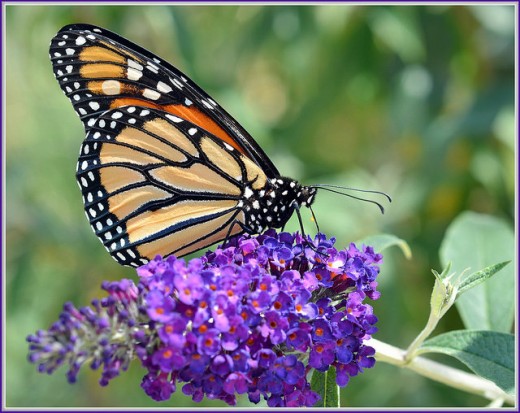
Butterfly size varies greatly by species. The largest butterfly is considered to be the Queen Alexandria's Birdwing which can have a wingspan of 8" to 12". Females of a given species are often larger than the males.
The butterfly in the image below is a Banded Peacock Swallowtail.
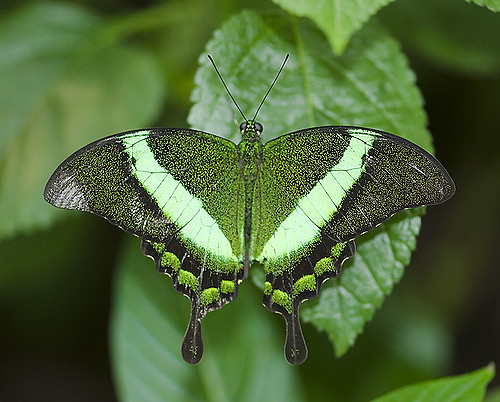
As indicated earlier, butterflies can be strong fliers, migrating as far as 3,000 miles. In fact, they can also fly relatively fast. Some as fast as 30 miles per hour, although some are much slower.
The image below shows a Blue Tiger butterfly.
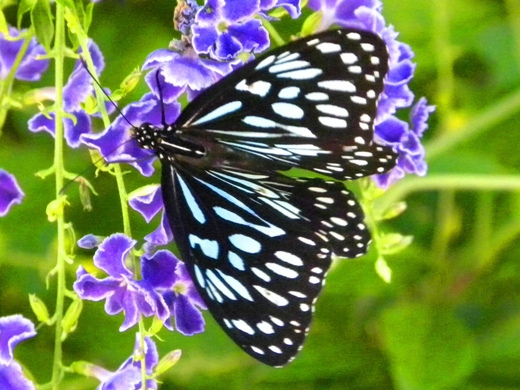
Butterflies are insects and thus, they are cold blooded. This means their temperature fluctuates with the environment. In order to keep functioning and flying normally, their temperature needs to be warm, at least 86 degrees Fahrenheit. This is another reason they tend to fly during the day.
The photographer identifies the species below as a Gulf Fritillary.
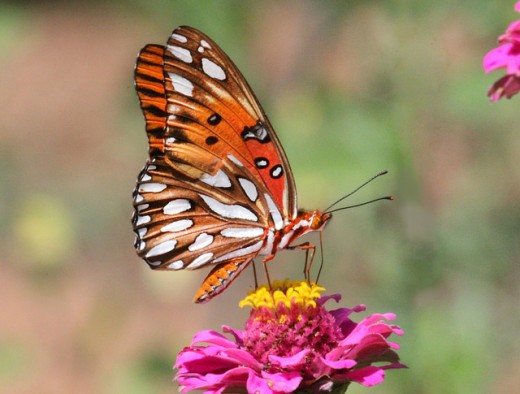
Male and female butterflies of the same species don't always look alike, their coloring and wing patterns can vary between the sexes. Both have iridescent scales covering their wings. Male butterflies of a given species sometimes have more vibrant colors than the females.
This unique butterfly appears that it might be a Marbled White.
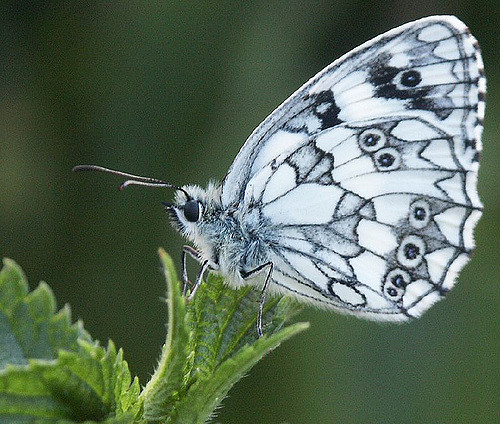
Butterflies do not have teeth, and as mentioned above, feed primarily on nectar, or perhaps mud and so forth. They drink through their proboscis/tongue which is a long tube.
Based upon coloring alone, the image below must be of a Monarch butterfly.
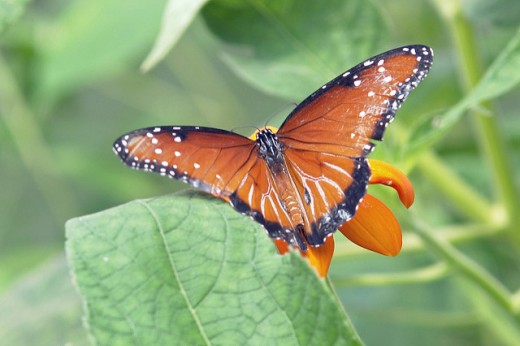
The antenna of a butterfly is very important to their ability to fly. Their antenna helps them with orientation and balance while in flight. The antenna also plays an important role in their sense of smell.
The brightly colored species below is identified as a Peacock butterfly.
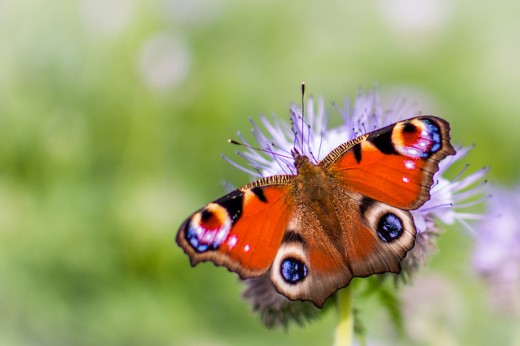
Butterflies don't really have great vision as far as seeing detail. However, they can see motion, color (red, green, and yellow), and light (including UV light which man cannot see). They can also, see in all directions at all times thanks to their compound eyes.
To learn more about butterfly anatomy, you can review the article here.
The photographer does not identify the butterfly but it appears to be a variety of Brush-Footed.
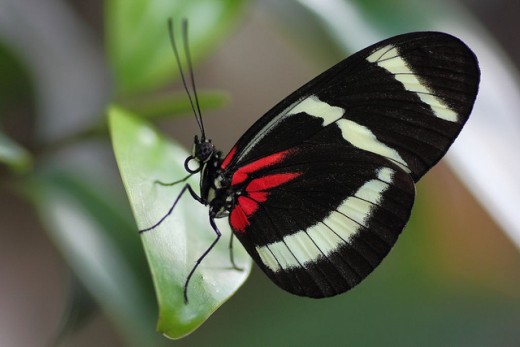
One way that butterflies attempt to stay warm is to bask. To find light-colored rocks or a similar surface where they can rest, stretch out their wings, and absorb some sunshine to warm themselves.
The photographer did not identify the species below but it appears to be a variety of Brush-Footed.
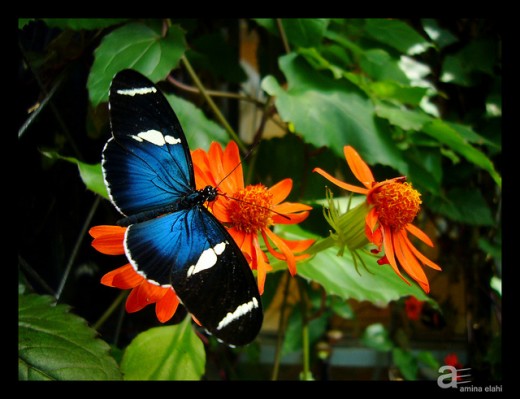
As mentioned above, butterflies have sensory receptors on their antenna for smell. These are also present on their legs and other parts of their body. They use smell to locate food and in finding a mate as well.
The photographer does not identify the species of the butterfly below, but it appears to be a Japanese Kite.
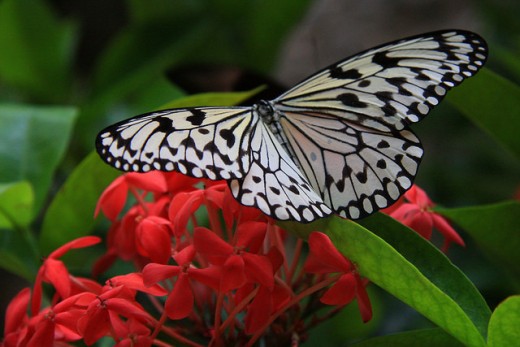
While butterflies do not have true ears like humans, it is said that they can "hear" by feeling vibrations through their wings primarily. In addition, due to their ability to detect motion and changes in light, they can often react to an approaching danger despite being unable to hear it.
This is another image of an unidentified species.
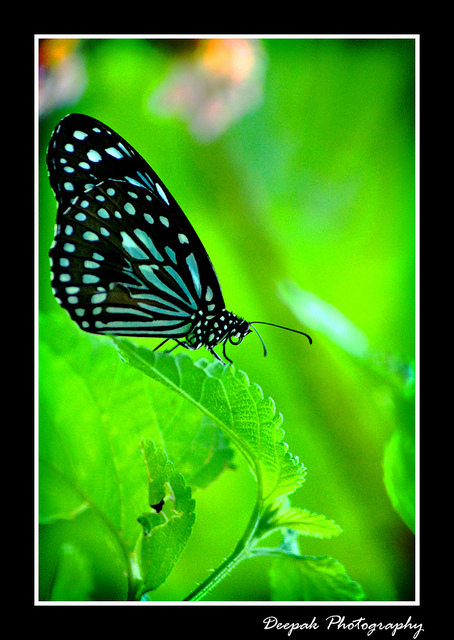
Butterflies also don't have lungs as humans do. They don't breathe through their mouth or a nose either. They have openings along the sides of their body which allow oxygen to enter their body directly. These are called spiracles.
Here is an image of a Zebra Longwing.
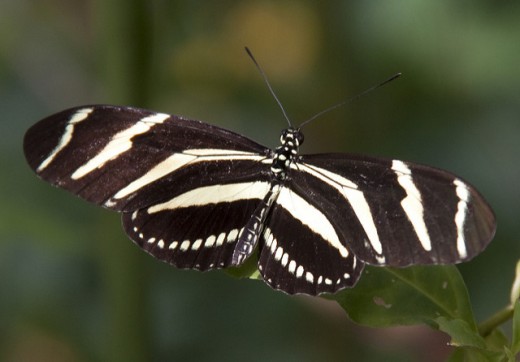
Most butterflies are diurnal, they are active during the day. During the night, most of them rest but it's not known if they sleep. They don't have eyelids, so their eyes are always open.
It is assumed that the image below is of a Checkerspot.
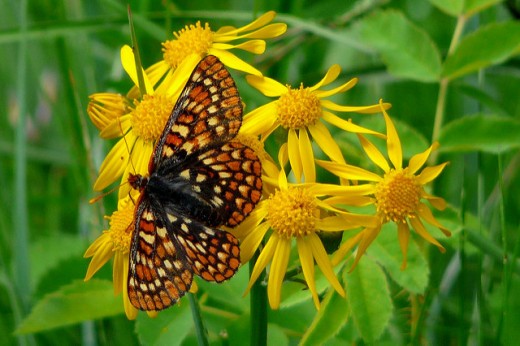
Males pass sperm to the female butterfly who then lays an egg on plant leaves. Which plants the female selects depends upon the species of butterfly. Often, it is a single egg and it is "glued" securely to the leaf. However, females may lay many eggs each day, hundreds in some cases.
This photograph captures an unknown species. It was photographed in Malaysia.
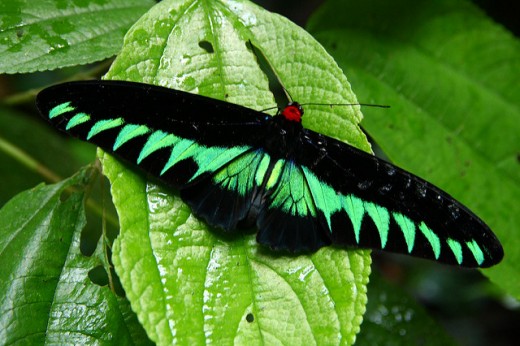
Just as wingspan varies greatly by species, so does weight. In general, butterfly weight will be recorded in grams, due to their lightweight. For instance, an average Monarch butterfly might weight .5 grams or .0176 ounces.
The image below is assumed to be some type of Brush-Footed butterfly.
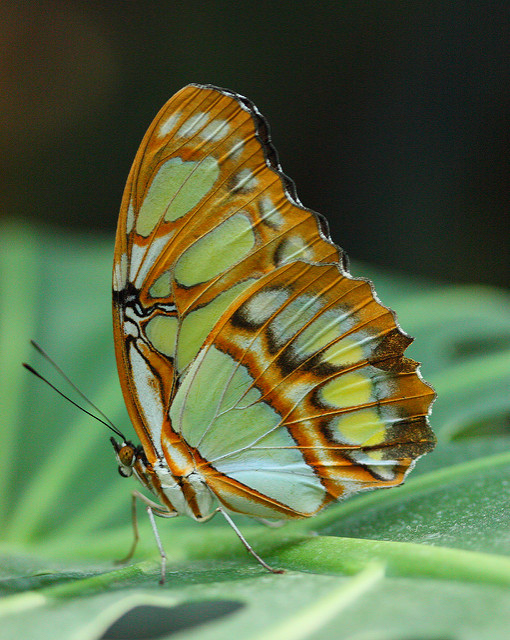
It's not known what allows migrating butterflies to know when to migrate. The changing temperature and length of daylight may be triggers. It is also unknown how they know where to go. It's not learned obviously since so many butterflies live only weeks and don't have "experience" with the migration process.
This photograph provides a close look at what appears to be some type of Swallowtail.
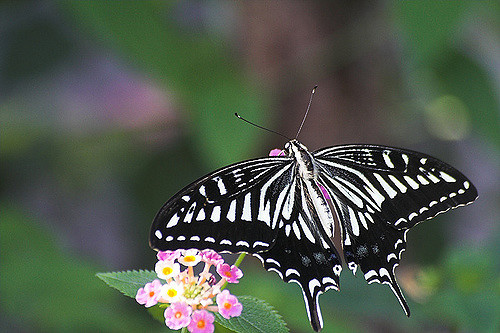
Not all butterflies migrate. Some hibernate and some remain in the pupa stage during the winter if eggs are laid later in the year. Due to the short life span, even those that migrate don't all do so. For instance, a Monarch butterfly may hatch, live, and die within 6 weeks. It would only be every second or third generation that migrates.
This image shows what is commonly known as a Postman butterfly. (Heliconius melpomene)
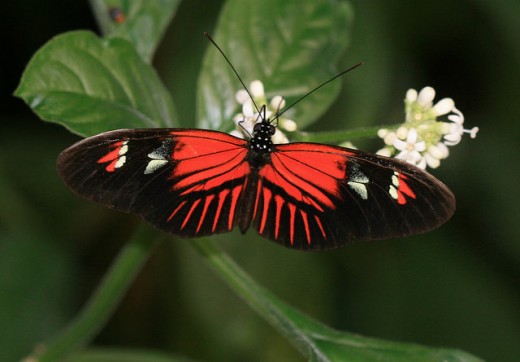
As mentioned above, many butterflies feed on nectar. Therefore, to find butterflies, one merely needs to find their food source. Fields and meadows filled with Dandelions, Red Clover, Milkweed, Thistles, Goldenrod, and a variety of other blooms are a good starting point in many parts of the world. Sunny days are best for viewing since that is when butterflies tend to be most active.
The image below shows a Holly Blue.
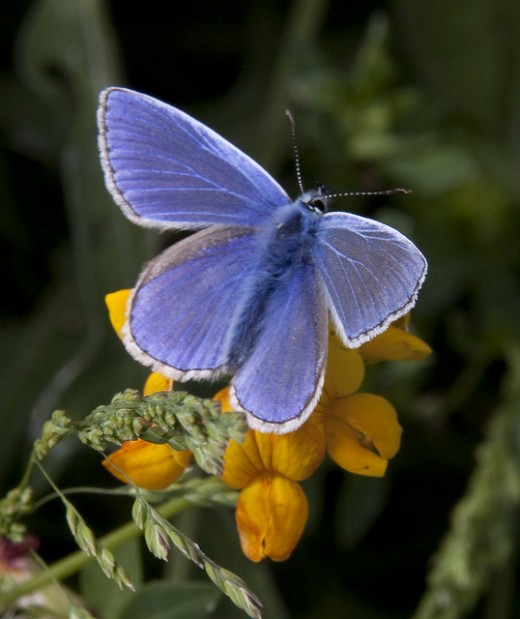
While the common perception may be that butterflies have two wings, they do not. They have instead, four wings. A hindwing and a forewing on each side.
If you observe butterflies and want to identify them with a guide, you will have to not only look at their color and the pattern on their wings but their wing shape as well. They may have extended tails on the wings or the wings may be more rounded or more pointed and so forth.
This beautiful image below shows another Swallowtail.
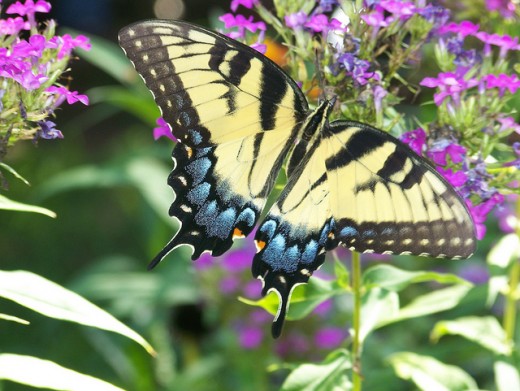
A group of butterflies is most often called a swarm. A "rabble", "Kaleidoscope", and even a "flutter" are also sometimes used to describe them.
The photographer did not identify the species below.
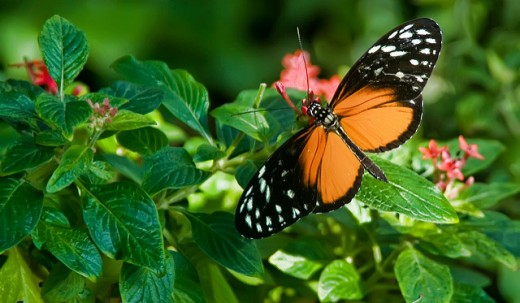
Thomas Marent explains in his book "Butterfly" that the patterns on the upper and undersides of a butterfly wing can be "remarkably different". The most vibrant colors are often on top to attract mates and to let predators know of toxicity (a defense) while the undersides may provide a more muted color for purposes of camouflage.
While the species of the butterfly below is not identified, its markings are truly distinct. It is believed that it was photographed in Columbia.
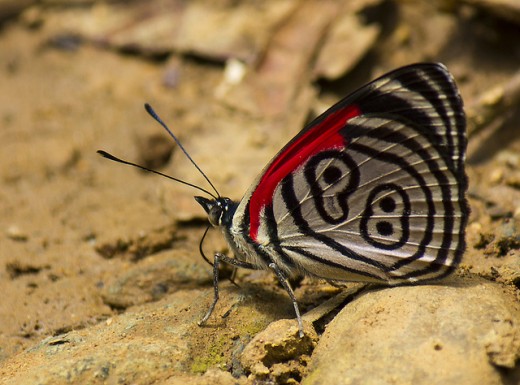
As mentioned above, many butterflies feed primarily on nectar. However, they often supplement this diet with minerals found in sweat, urine, dried up puddles and rocks, and so forth. Protein can be found in animal dung or the carcass of a dead animal and amino acids are sometimes sought in blood and so forth.
The species below is unidentified.
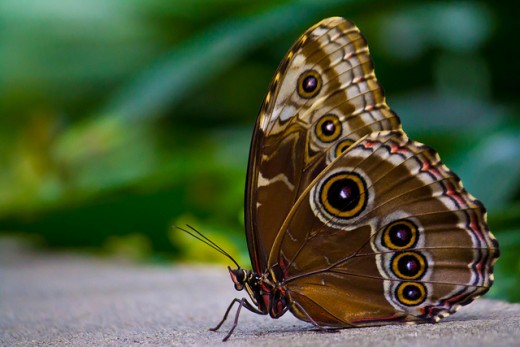
During the caterpillar stage, the butterfly feeds primarily on the plant where they hatch and this is the phase at which they eat and grow the most. Female butterflies carefully choose where they lay their eggs so that their young will be able to feed where they hatch.
The image was taken in India but the species is not named.
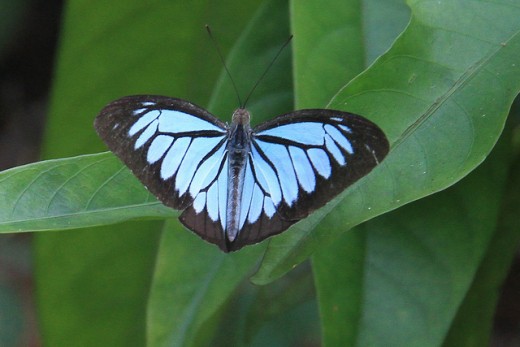
If you want to attract butterflies to your home, you won't do so with a large grassy, weed-free lawn. Instead, you can create a butterfly garden with flowers that have the nectar many of them desire.
The species below is likely a Swallowtail.
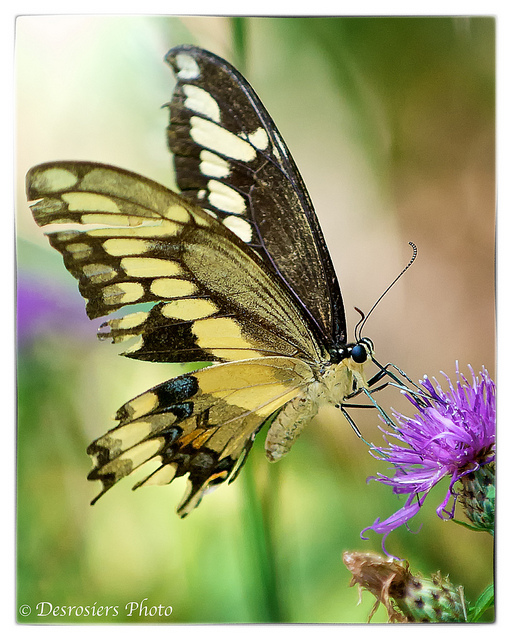
You can grow Marigolds, Yarrow, Zinnias, Black Eyed Susans, Coneflowers, Hibiscus, Hollyhock, Daylilies, Phlox, and other perennial flowers to name just a few which can attract butterflies. There are also many shrubs and flowering trees that can attract them as well.
Some people research which local butterflies they want to attract and determine which plants draw them in to determine which they want in their garden.
Below is a Common Bluebottle.
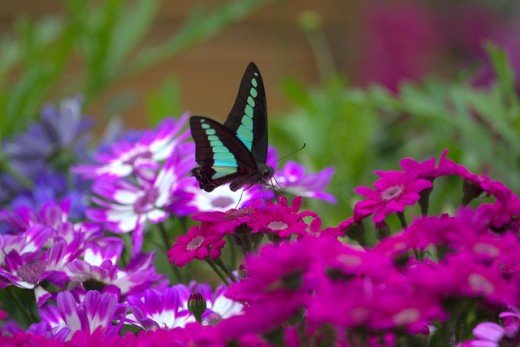
If you want to photograph a butterfly, using a macro mode can be helpful or an image stabilized zoom perhaps. As Jeffrey Glassberg suggests in his book "Butterflies Through Binoculars", it is often best to approach a butterfly from the side rather than from overhead. They tend to be scared off less easily, and in many instances, you can get a better view of both the head and wings, if the wings are held upright as they often are.
Preparing to feast on a butterfly bush this Painted Lady shows us her true colors.
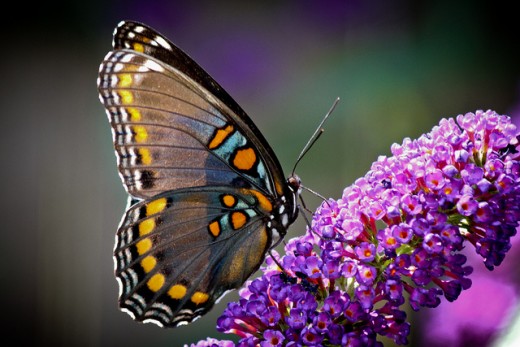
If you want to hunt butterflies for the purpose of observing them, author Jeffrey Glassberg suggests a pair of binoculars with the ability to focus at a distance of 6 feet or less. His book Butterflies Through Binoculars provides many such tips.
The image below is of another Glasswing.
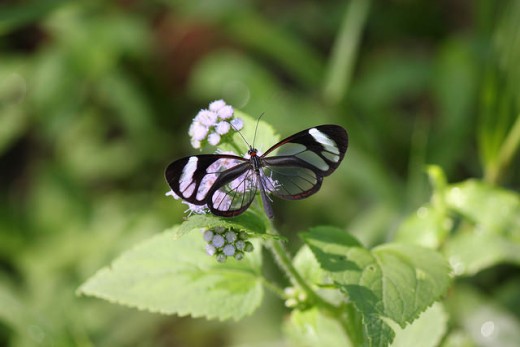
Of course, if you want to view or photograph butterflies, you can also visit a butterfly garden. Many cities/zoos now offer them.
The photographer identifies the image below as a Common Jezebel.
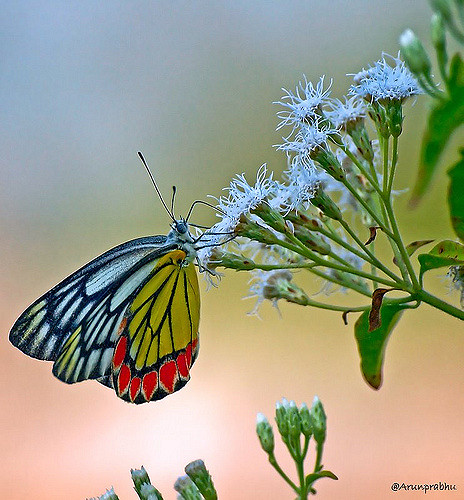
Aside from providing enjoyment with their beautifully colored wings, butterflies also assist in the pollination process. Experts seem to disagree however about how large of a role they play in this process as bees are still considered the biggest contributor by far.
The photographer captured an image of an intricately patterned species but did not name it.
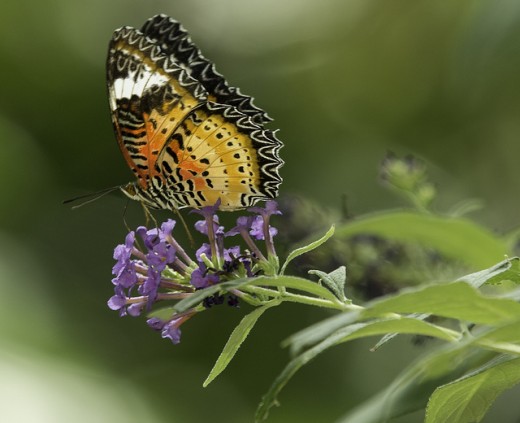
While butterflies have a very short lifespan as compared to humans, as a species they are quite old. It is estimated that they have existed for 130 million years while modern humans (homo sapiens) seem to have evolved only about 250,000 years ago.
A Pipevine Swallowtail is featured in the photograph below.
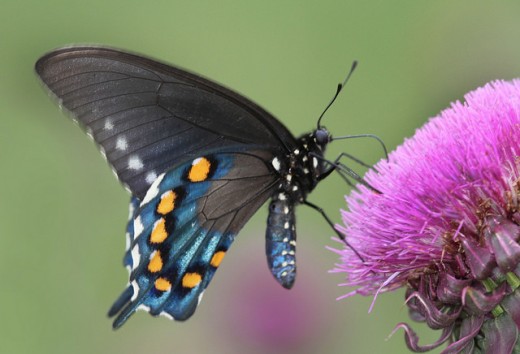
The smallest butterfly is the "Blue Pygmy" which has a wingspan of only 5 to 7mm. It can often be found in the southern states of the US.
You can see Aporia crataegi, the black-veined white, in the image below.
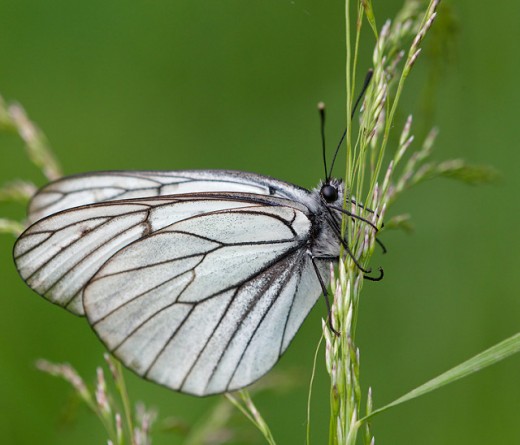
When butterflies mate, they will lock together at the abdomen. They will stay locked together for quite some time; anywhere from an hour to 24 hours.
Below you can see the underside of a Birdwing.
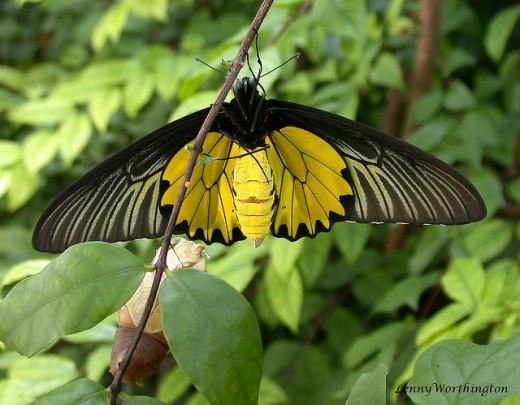
Butterflies are widespread which means that nearly everyone has seen them and can enjoy them. It is only in the most severe, cold climates where they cannot be found; such as Antarctica.
This photograph shows a Crimson Rose.
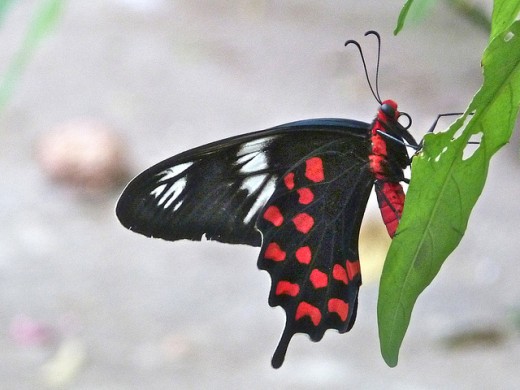
As mentioned previously, butterflies aren't able to see as much detail as humans but they have the ability to see UV and polarized light. This allows them to know the position of the sun, even when behind clouds, and use it as a compass as they fly. You can learn more about their vision and anatomy on this page.
The species below is a Blue Morpho.
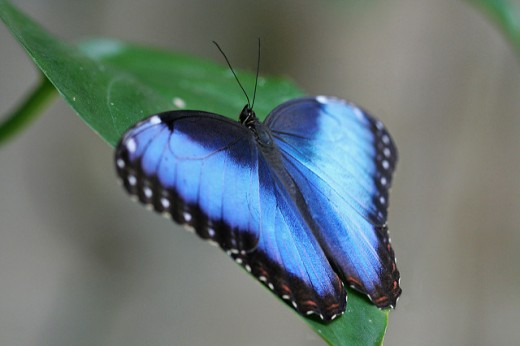
Butterflies and moths are closely related. Butterflies have knobbed antenna and moths don't. Moths have plumper, fuzzier bodies too. Typically, when not basking, butterflies rest with their wings held upright while moths will hold their wings spread out. It is also more common to see moths active at night and butterflies during the day although there are exceptions to this rule.
Below you can see a Blue Clipper.
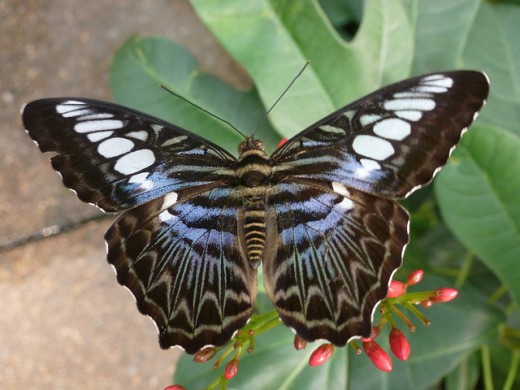
Certainly, every species of butterfly is unique and studying them could take a lifetime. You can find all kinds of interesting butterfly facts from some of the articles listed here.
© 2011 Ruth Coffee

